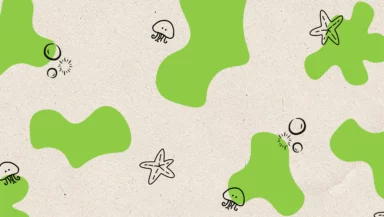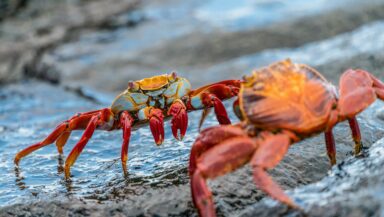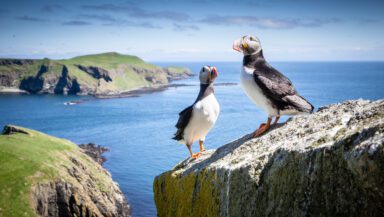Ninety-two per cent of the UK’s so-called Marine Protected Areas do not have site-wide protection against the most destructive types of fishing, a Greenpeace UK report reveals.
The report, ‘All At Sea: How government inaction makes a mockery of UK marine protection’, also reveals that in 2021 alone, vessels with bottom towed gear spent an estimated 47,833 hours fishing in UK offshore MPAs. And almost a third (32%) of the UK’s Marine Protected Areas (MPAs) have no fishing restrictions across the majority of their site, meaning 122 of these ‘protected’ areas are substantially open to all kinds of destructive fishing 365 days a year.
‘All At Sea’ is released at the start of the United Nations COP 15 Biodiversity Conference in Canada, which kicked off on Wednesday 7 December. The report highlights that the UK’s network of Marine Protected Areas covers 38% of domestic waters and represents the vast majority of the UK’s range of marine habitats. This means that if ministers gradually increased fishing restrictions across the entire network, as well as upgrading some MPAs to Highly Protected Marine Areas, they would reach the goal of fully or highly protecting 30% of the UK oceans by 2030.
Greenpeace UK’s oceans campaigners say that the lack of effective protection in the MPA network means that, despite extensive designations on paper, the government is an alarmingly long way from reaching ‘30×30’. The Marine Management Organisation’s (MMO) current byelaws approach for protecting offshore English MPAs, whereby partial protections of MPAs are implemented on a site-by-site basis, is too slow and piecemeal to address the scale of the crisis.
Environment Secretary Therese Coffey, who is attending COP 15 with DEFRA Minister Lord Benyon and FCDO Minister Zac Goldsmith, recently described the event as “the most important conference of the year”. The UK delegation has promised it will “strive for an ambitious agreement that includes a global 30×30 target”.
Greenpeace UK has set out a step-by-step roadmap for the government to reach its target of 30% protection of English waters by 2030, which begins with:
- Using post-Brexit powers to apply variations to commercial fishing licences to immediately exclude all destructive industrial fishing from all offshore Marine Protected Areas;
- Setting all catch limits at or below maximum sustainable yield.
This would kick-start a process to ban the vast majority of fishing in English MPAs over the next seven years – alongside transitioning some existing MPAs to Highly Protected Marine Areas (HPMAs) to cover 10% of UK waters – to meet the goal of fully or highly protecting 30% of England’s seas by 2030. Westminster also needs to work with devolved governments to create the same level of protection in Welsh, Scottish and Northern Irish waters. On top of that, Greenpeace is also urging ministers to provide more support to small-scale fishers and coastal communities.
Anna Diski, Greenpeace UK Oceans Campaigner, said: “Therese Coffey is at a major global summit right now to urge other nations to strengthen ocean protection, but in the UK we don’t have our own house in order. Our potentially world-leading network of Marine Protected Areas are still just lines on a map, as threadbare regulation allows harmful industrial fishing to continue relentlessly inside them. At a time of climate and ecological crisis, this failure to properly protect our sensitive marine habitats is shameful.
“Our seas are home to a startling breadth of biodiversity, which is being jeopardised – along with the livelihoods of small-scale fishermen – by the government’s failure to act. If the UK government wants to be a leader on marine protection globally, it needs to start by delivering 30×30 at home. That’s why we are calling on Therese Coffey to show true leadership on ocean protection, beginning by adding a condition to existing fishing vessel licences that will block industrial fishing vessels from plundering our MPAs.”
Celebrity chef, broadcaster and campaigner Hugh Fearnley-Whittingstall is endorsing Greenpeace’s All At Sea report. He said: “The government likes to present itself as a world leader in ocean protection. But Greenpeace’s report reveals the bitter truth: politicians are content to look the other way while industrial fishing vessels trash our so-called Marine Protected Areas, leaving next to nothing for our more sustainable small-scale UK fishermen to catch.
“Allowing industrial fishing to continue in vulnerable and vital marine eco-systems is plainly the complete opposite of marine protection. There is no good explanation for the Government’s lack of leadership, and their claims on ocean protection are continually proving to be hollow. So, I’m adding my voice to Greenpeace’s urgent call to use fishing licence variations to truly put MPAs off-limits to industrial fishing.”
ENDS
For more information or to arrange an interview, please contact press.uk@greenpeace.org or call 020 7865 8255.
Notes to Editors
Full report: The full report, ‘All At Sea: How government inaction makes a mockery of UK marine protection’, can be read and downloaded here until the report is published online. The full report will be published online at https://www.greenpeace.org.uk/resources/all-at-sea-report/.
- Greenpeace UK’s 30×30 roadmap: The full Greenpeace roadmap to 30×30 can be viewed on page 22 of the report.
Photos: Accompanying photos for publication can be downloaded here.
Research: Methodology and sources
- 92% of the UK’s so-called Marine Protected Areas have no site-wide regulation to protect them from the most destructive fishing (all towed gear). Just 8% of MPAs are fully closed to the most harmful types of fishing – an area the size of less than 0.1% of the EEZ. Source: page 2 of report. For methodology, see Appendix 2, ‘MPA protection from fisheries’ on page 30 of the report.
- In 2021 alone, vessels with bottom towed gear spent an estimated 47,833 hours fishing in UK offshore MPAs. Source: See Appendix 7 on page 33 of the report.
- 32% of the UK’s MPAs have no restrictions on fishing in the majority of their site area and are therefore substantially open to all kinds of destructive fishing 365 days a year. Source: see appendix 4 on page 32 of the report.
- The UK’s network of Marine Protected Areas covers 38% of domestic waters, according to the JNCC. Source.
- The total number of MPAs analysed and the total area they cover differs from headline JNCC figures. Our analysis is based on raw data sourced from the JNCC MPA mapper and Data Hub for all European marine sites and English MPAs, DAERA for the Northern Irish MCZs, lle.gov.wales for the Welsh MCZs and NatureScot for all Scottish MPAs. The number of MPAs in this analysis corresponds with the online JNCC MPA Mapper, but does not correspond with the headline JNCC Marine Protected Area Network Statistics (386 MPAs covering 317,220 km2 vs 374 MPAs covering 338,545 km2). This is because in some instances MPAs which are split into different zones are considered in our analysis as separate while the JNCC groups them together, for example Medway Estuary MCZ, and the JNCC statistics summary includes the UK continental shelf in addition to the UK EEZ.
Definitions: destructive fishing
- ‘Destructive fishing’ refers to all towed gear, i.e. both pelagic and bottom towed.
- There are two main categories of fishing gear types, mobile (or active) and static (inactive). Mobile gears are actively towed along the seabed or through the water column, while static gears remain relatively stationary and are not actively moved. We consider mobile gears to be the most harmful category, since static methods have a lower impact on the marine environment. Bans on the most impactful gear types should be initially prioritised while working towards a network of fully or highly protected MPAs by 2030. Bloom, ‘Impacts of fishing’, September 2010. https://www.bloomassociation.org/en/impacts-de-la-peche/



